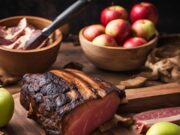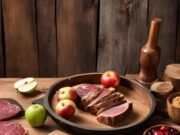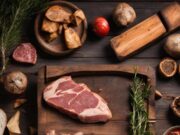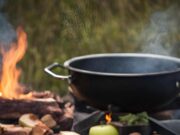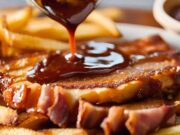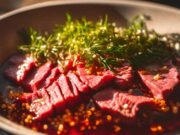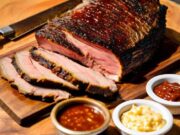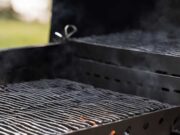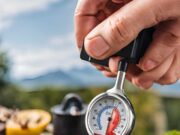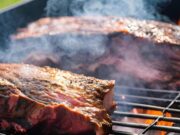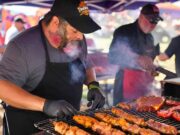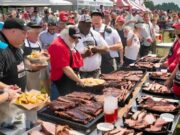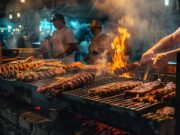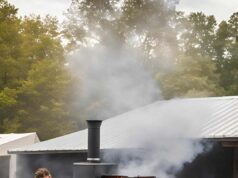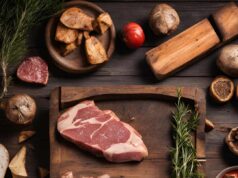Choosing the right searing technique can significantly enhance your cooking skills and improve the flavor of your meats.
This article will explore the two primary methods: direct and reverse searing. It will break down what each technique involves, highlight their key differences, and discuss their respective pros and cons.
By the end, you will possess the knowledge necessary to select the ideal method for your favorite cuts of meat, tailored to your individual cooking style.
Key Takeaways:
- Direct searing involves cooking meat directly over high heat, while reverse searing involves cooking at a lower temperature before searing at a high heat.
- Direct searing is quicker and results in a crispy exterior, while reverse searing results in a more evenly cooked and tender meat.
- The best searing technique for you depends on the cut of meat, personal preference, and cooking style. Experiment with both methods to find what works best for you.
Direct Searing vs. Reverse Searing: An Overview
Direct searing and reverse searing are two effective cooking methods for preparing thick cuts of steak, such as ribeye and flank steak, each offering a distinct flavor profile and texture.
Direct searing involves cooking the steak over high heat to achieve that ideal golden brown crust and grill marks. In contrast, reverse searing takes a more gradual approach, starting the cooking process at a low temperature, which allows the internal temperature to rise slowly for a more evenly cooked steak.
By mastering these techniques, you can enhance your culinary skills and ensure juicy, flavorful results on the grill.
What is Direct Searing?
Direct searing is a cooking method that involves applying high heat to the steak, resulting in a flavorful, charred exterior and enhancing the caramelization of the natural sugars in the meat.
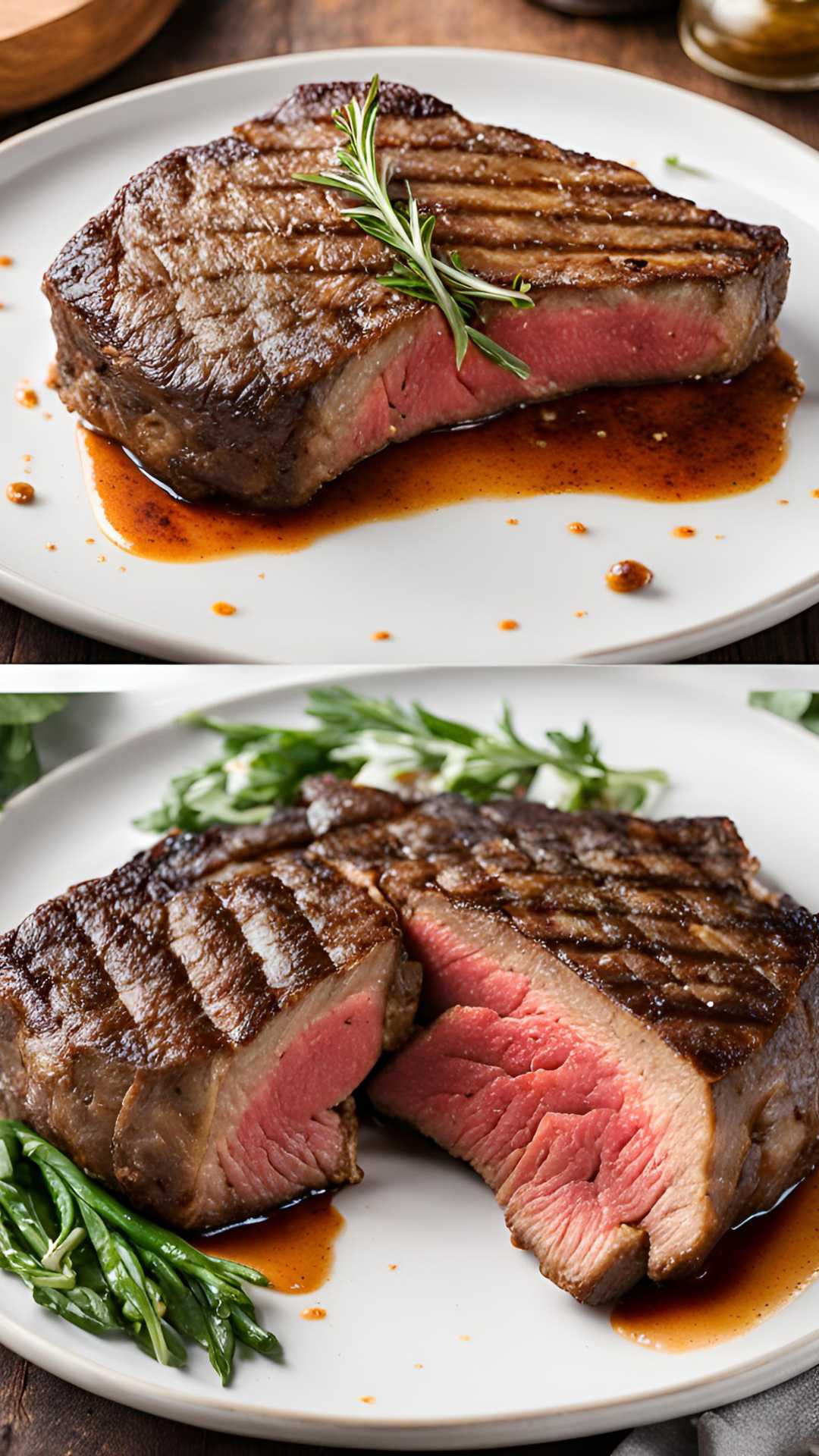
This technique typically requires cooking the steak over a high-temperature heat source, such as a grill or a cast-iron skillet. This allows the surface to brown and develop a rich, complex flavor. Ideal cooking temperatures for direct searing range from 450 to 700 degrees Fahrenheit, ensuring that the meat cooks quickly while locking in moisture to create a tender, juicy interior.
One of the key advantages of this method is the signature grill marks, which not only enhance the visual appeal but also contribute to the overall taste experience by adding a subtle smokiness that many food enthusiasts appreciate. As the steak sears, it forms a delicious crust, providing a satisfying textural contrast to the succulent meat underneath.
What is Reverse Searing?
Reverse searing is a cooking method that involves starting by cooking the steak at a low temperature, either in an oven or using sous vide, before finishing it with a high-heat sear to lock in flavors and juices.
This innovative technique ensures even doneness throughout the cut of meat, reducing the risk of overcooking the outer layer while leaving the center undercooked. By beginning with gentle heat, the internal temperature rises gradually, which aids in better retention of natural juices and flavors.
Once the steak reaches the desired internal temperature, a quick sear in a hot skillet or on a grill creates a desirable crust, enhancing both texture and taste.
This process not only improves the overall eating experience but also facilitates easy basting, allowing you to incorporate herbs or butter, which further elevates the flavor profile of the steak.
Key Differences Between Direct and Reverse Searing
Understanding the key differences between direct and reverse searing can greatly enhance your steak-cooking experience and improve the final result on your plate.
Direct searing involves cooking the steak over high heat from the outset, while reverse searing starts with low and slow cooking. This method allows for more controlled doneness and better retention of the steak’s juices.
By mastering these nuanced approaches, you can achieve distinct flavors and textures, making it crucial for both chefs and food enthusiasts to grasp the intricacies of each technique in order to create the perfect steak.
Cooking Methodology and Timing
The cooking methodology and timing are essential for achieving the ideal steak doneness, and your choice between direct searing and reverse searing significantly influences these factors.
In direct searing, the steak is exposed to high heat from the grill’s flames, resulting in a rapid browning process known as the Maillard reaction. This method requires careful monitoring, as it can lead to overcooking if temperatures are not controlled effectively.
On the other hand, reverse searing involves cooking the meat at a low temperature until it approaches the desired internal temperature before searing it to finish. This slow approach allows for more even cooking, gradually warming the meat throughout and enhancing its flavor and tenderness.
Ultimately, the method you choose impacts not only the doneness but also the juicy, caramelized crust that elevates the overall taste experience.
Pros and Cons of Each Technique
Both direct searing and reverse searing present distinct advantages and disadvantages, and understanding these nuances will assist you in selecting the right technique for your steak cooking needs.
Each method offers unique approaches to steak preparation that cater to varying preferences, skill levels, and available kitchen equipment. Direct searing involves cooking the steak over high heat, which creates a beautiful crust and enhances flavor through the Maillard reaction. This technique is generally quicker, helping to preserve the outer juices, but it may increase the risk of overcooking the inner layers.
On the other hand, reverse searing begins with cooking the steak at a low temperature before finishing with a high-heat sear. This approach promotes more even cooking and optimal juiciness. However, it typically requires more time and often necessitates specialized equipment, such as an oven or sous vide setup, which may not be readily available to the average home cook.
Carefully evaluating these aspects can significantly influence the final outcome of your meal.
Choosing the Right Searing Method for Your Needs
Selecting the appropriate searing method for your needs is crucial to achieving optimal results with your steak. Considerations such as the cut of the steak, your personal preferences for doneness, and your cooking style will greatly impact your choice between direct and reverse searing.
For example, thicker cuts like ribeye often benefit from the reverse sear method, promoting a more even cook, while thinner steaks may excel with a quick direct sear, allowing you to achieve that desirable bark and enhanced flavor.
Best Cuts of Meat for Each Technique
Selecting the best cuts of meat for direct and reverse searing can significantly enhance your cooking experience and elevate the flavors of your steak dishes.
Understanding the unique characteristics of each steak cut allows you to take a more tailored approach to cooking, ensuring that the searing technique you choose brings out the best in each piece of meat. For instance, a thick ribeye, with its rich marbling, is ideally suited for reverse searing. This method benefits the ribeye by allowing for gradual cooking, which renders the fat beautifully while resulting in a tender and juicy interior.
On the other hand, a lean sirloin, which is best enjoyed when cooked quickly, excels with direct searing. This cut is capable of forming a delicious crust without requiring an extended cooking time. Choosing the right cut not only impacts flavor but also enhances the overall texture, making each searing method a delightful culinary experience.
Considerations for Personal Preference and Cooking Style
When selecting a searing method, it is essential to consider your personal preferences and cooking style, as these factors can significantly impact the outcome of your steak.
For instance, if you appreciate a robust, charred flavor, you may find that high-heat methods, such as pan-searing or grilling, are more appealing. These techniques create a delicious crust that enhances the meat’s natural aroma. On the other hand, if you prefer a more subtle flavor, you might opt for a gentler approach like sous vide. This method allows for precise temperature control and a tender texture, followed by a quick sear for visual appeal.
As a novice cook, you could benefit from exploring these different techniques, while seasoned chefs might consider experimenting with various oils or seasoning blends to further elevate their dishes. Ultimately, understanding the interplay between texture and flavor can lead to a more satisfying dining experience tailored to your individual tastes.
Frequently Asked Questions
What is the difference between direct and reverse searing?
Direct searing involves cooking the meat directly over high heat, while reverse searing involves cooking the meat at a lower temperature first and finishing it with high heat.
Which technique is better for achieving a perfectly cooked steak?
It ultimately depends on personal preference, but many chefs argue that reverse searing produces a more evenly cooked and tender steak.
Does direct searing or reverse searing take longer?
Reverse searing typically takes longer as it involves cooking the meat at a lower temperature for a longer period of time before finishing it with high heat. Direct searing is a quicker method.
Can you use either technique for any type of meat?
Both direct and reverse searing can be used for various types of meat, such as steak, pork chops, and chicken breasts. However, thicker cuts of meat tend to benefit more from reverse searing.
Are there any flavor differences between direct and reverse searing?
Some argue that reverse searing can result in a more evenly cooked and juicier meat, while direct searing can create a more charred and smoky flavor. It ultimately depends on personal preference.
Do I need any special equipment for direct or reverse searing?
Both techniques can be done using a grill, oven, or stovetop. However, some may prefer using a thermometer or a cast iron skillet for better results.



